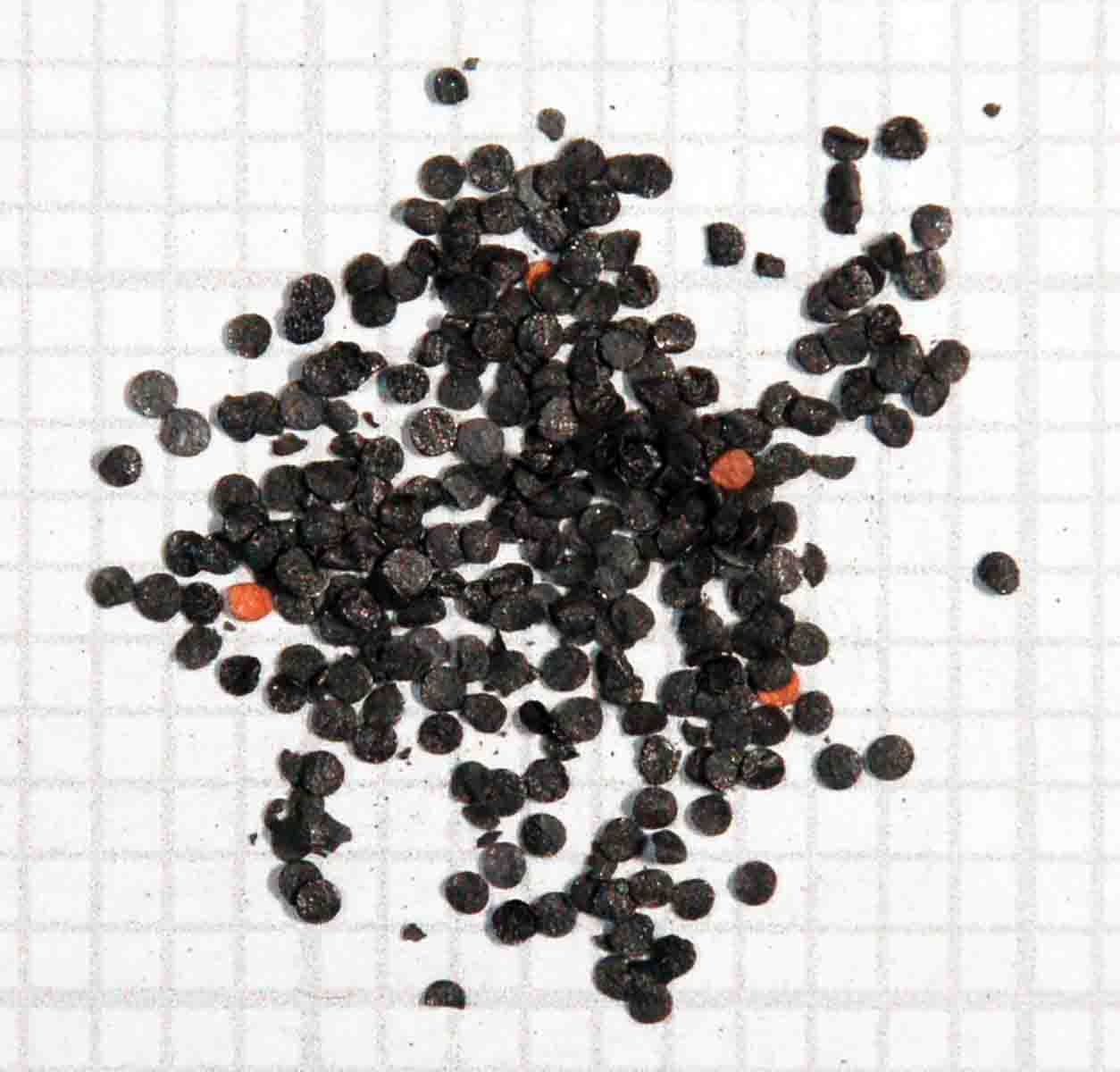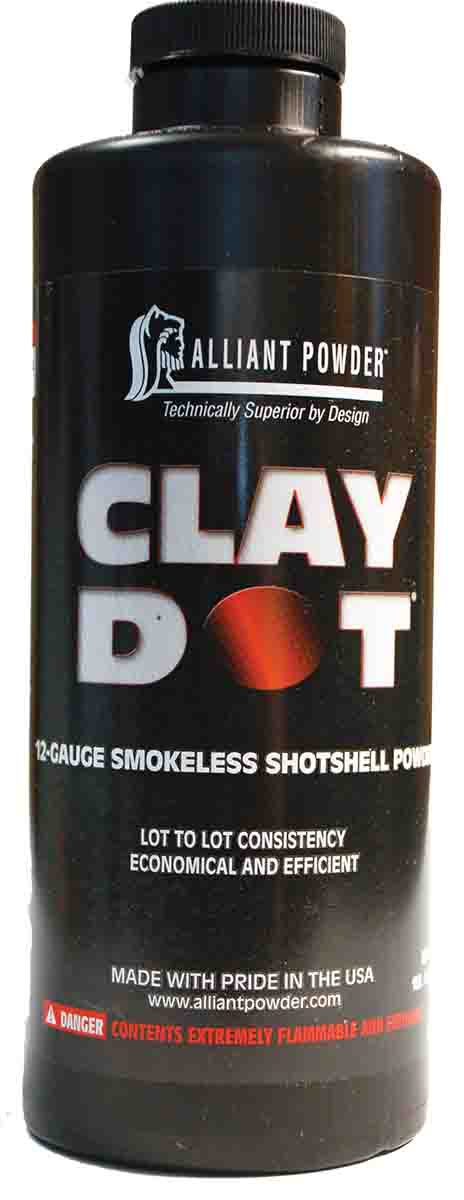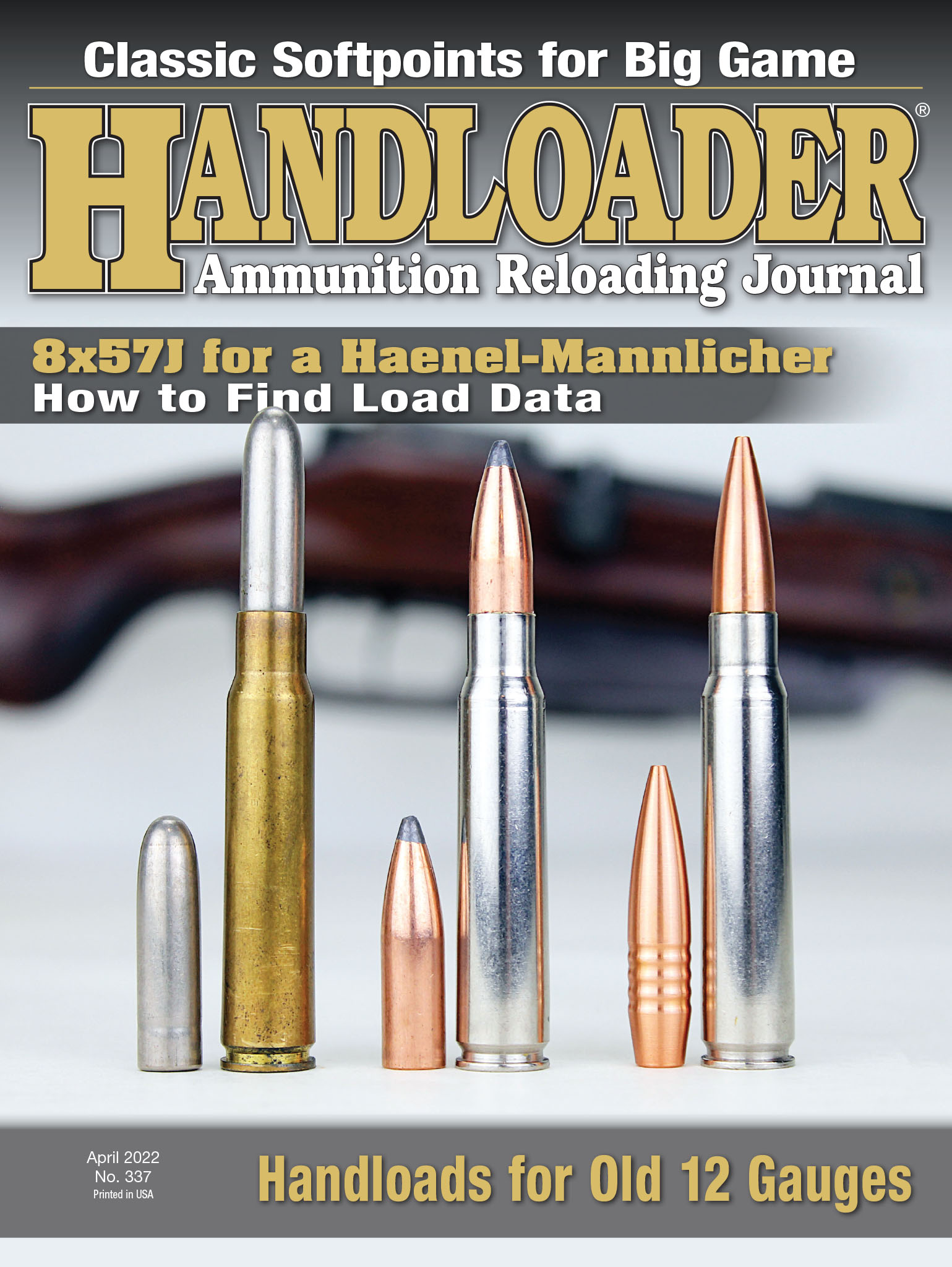Propellant Profiles
Alliant Clay Dot
column By: Randy Bimson | April, 22


Alliant Clay Dot, a purpose-developed propellant for light 12-gauge target load shotshells, is one of the powders in question and the focus of this column. Specifically, I will look at the possible uses for Clay Dot in loading handgun ammunition.
I must admit that I write this column with some trepidation. After 51 years of being actively involved in the firearm and ammunition manufacturing industries, I can attest to having seen the end results of far too many shooters’ “experiments” based on assumptions. I want to make it absolutely clear here and now that there is no room in this discussion for assumptions.
Let’s start by looking at the physical characteristics of Clay Dot and possibly dispel a few of the “assumptions” a handloader desperate for powder might jump to. Clay Dot is a double-base powder. Alliant double-base powders range from Alliant’s American Select with a nitroglycerin content of around 2 percent, which is considered “near” single base, and range up to Bullseye with a high nitroglycerin content of near 40 percent. Clay Dot’s nitroglycerin content sits a few percentage points south of the midpoint nitroglycerin percentage. In developing Clay Dot, Alliant did not replicate any other Alliant powder. Clay Dot was specifically aimed at incorporating the best characteristics, from a shooter/handloader perspective, of Red Dot and Hodgdon Clays. By burn rate, Clay Dot sits about three points slower burning than Red Dot, two points slower burning than Hodgdon Clays and two points faster burning than Bullseye. As originally introduced in 2005, Clay Dot was a weight-for-weight and volume-for-volume replacement for Hodgdon Clays when used in accordance with 12-gauge loading data only.
Now to dispel one assumption. Clay Dot was introduced some 16 years ago and with the possible changes to either Clay Dot or Clays in manufacturing sources and chemistry over the years, one should not assume that Alliant Clay Dot continues to be a weight-for-weight and volume-for-volume replacement for Hodgdon Clays. Particularly regarding loading data for handgun cartridges where Clays is a popular propellant choice. Many revolver, pistol target and light field loads require only small amounts of fast-burning powders such as Red Dot, Hodgdon Clays and Bullseye, where a difference in charge weight of a half-grain or less can be the difference between a maximum load and an unsafe load.
The second assumption to dispel is because the burn rate of Clay Dot is close to the popular handgun target load powders, Alliant Bullseye for example, that one could just reduce the suggested Bullseye starting load by “X-percentage” and “have at it” using Clay Dot. Propellant powders are a complex chemical combination of energizers and stabilizers for long storage life; ballistic modifiers, which reduce muzzle flash, promote combustion efficiency and clean burning. With years of knowledge gained from the designing, producing and testing of propellant powders, propellant powder manufacturer ballisticians are still unable to calculate and predict exact changes in ballistic results, therefore, they still rely on pressure test-firing of each combination of components to develop loading data. Don’t try and second guess them.
Moving on with the physical characteristics, Clay Dot is a flake powder with the flakes being a nominal diameter of .055 inch and thickness of .007 inch. Like other Alliant “dot” powders, Clay Dot has color-dyed powder flakes interspersed throughout the powder. In the instance of Clay Dot, the colored flakes are “clay target orange” in color. Clay Dot is light, yet bulky, with a bulk density of .48g/cc.
So where does Clay Dot fit into the handgun ammunition scheme of things with the powder shortages that are currently prevalent? Clay Dot has limited application for handgun loads, predominately for target loads. Alliant currently publishes only two ballistic lab tested handgun loads and they both are, strangely enough, for the .44 Special. I would have thought Alliant would have chosen a more popular cartridge to start establishing Clay Dot handgun data like for the 9mm Luger or .45 Auto. So be it.
Following input from Alliant, I developed Clay Dot load data for the following cartridges, 9mm Luger, .38 Special, .45 Auto and .45 Colt.
The following caveats must be adhered to when loading Clay Dot:
Clay Dot was developed for primary use as a shotshell powder with low chamber pressures. The chamber pressures for appropriate target-load handgun cartridges are much higher and can dramatically change the burning characteristics of the Clay Dot and subsequent chamber pressure. No attempt should be made to use Clay Dot to load +P, .357 Magnum or .44 Magnum-type cartridges.
Chamber pressures can be dramatically affected by cartridge case volume. A bullet seated deeply in the cartridge case reduces the case volume and increases chamber pressure. Bullets must not be seated any deeper than the listed minimum cartridge overall length!
I utilized two progressive loaders in developing the loading data included in this column, an RCBS Pro-2000 fitted with an RCBS Uniflow Powder measure with a micrometer-adjustable small measuring drum, and a Star Machine Works Universal Loader fitted with the ½-inch powder bar using Hornady powder bushings.
The RCBS Uniflow powder measure is of the rotary-drum type and the powder measure of the Star Machine Works is of the reciprocating-bar type. It is interesting to note how the density and texture of Clay Dot affected the two different powder measure systems differently. When the RCBS Uniflow was operated manually, I could feel the rotary powder drum “hang up” on the dump cycle of the drum, the drum shearing some of the powder flakes as it rotated. This had no effect on the progressive function of the Pro-2000 as the drum return spring was more than strong enough to shear the flakes and normally cycle the powder measure. As a safeguard, I took every charged case off the loader, weighed the charge and returned it to the cartridge case. All charges were within 1⁄10 grain.
The reciprocating charge bar of the Star Universal showed no apparent dislike for the rather large Clay Dot flakes and just kept on chucking like nothing was out of the ordinary.
My final observations are as follows. Clay Dot can be used to load target-type loads for the cartridges listed in place of other traditional handgun powders. All the loads in the accompanying data table showed the visual signs of normal chamber pressures in the test firearms, easy extraction and no flattening or cratering of primers. In the case of the 9mm and .45 Auto, ejected cases were thrown the same distance as factory loads. Accuracy was very good to excellent, depending on the caliber and firearm(s) used for test purposes. Velocities fell into the “expected” velocity range for the handgun/bullet weight combination and extreme spreads were well within acceptable limits. For the handloader using a progressive reloader, with the bulky nature of Clay Dot, it is almost impossible to double charge the 9mm Luger with the maximum load shown here as the powder will overflow the cartridge case. Lastly, I found the Clay Dot to be a very clean burning shotshell powder, but rather dirty in most of these handgun loads. I found this strange as I would have thought the higher chamber pressure and heat would cause a more complete burn. One more thing to explore.
In the current market where a handloader may not have much choice in propellant powders for handguns, if you run across some Clay Dot, buy it up. You will be able to create great target loads for a host of popular handgun cartridges and keep shooting. Clay Dot is available in 1-pound canisters and 8-pound kegs.



.jpg)